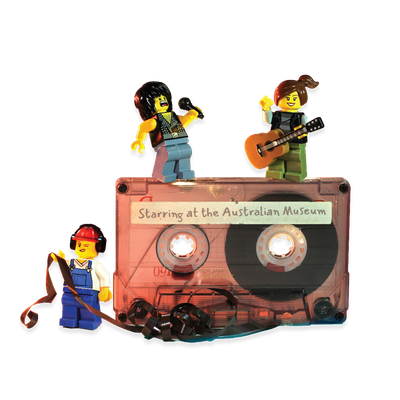Your search returned 2817 results
By Page Type
By Tag
- fish (966)
- blog (696)
- fishes of sydney harbour (401)
- First Nations (299)
- Blog (236)
- AMRI (169)
- archives (164)
- Eureka Prizes (146)
- Aboriginal and Torres Strait Islander (135)
- insect (126)
- Ichthyology (124)
- geoscience (109)
- minerals (102)
- climate change (99)
- podcast (94)
- Fish (91)
- Anthropology (89)
- International collections (80)
- Minerals Gallery (78)
- wildlife of sydney (78)
- Labridae (77)
- frog (74)
- gemstone (70)
- photography (66)
- history (64)
- Mollusca (60)
- gem (59)
- staff (59)
- Birds (56)
- Gems (56)
- Indonesia (56)
- education (56)
- shark (55)
- AMplify (54)
- people (53)
- earth sciences (50)
- exhibition (50)
- past exhibitions (50)
- Gobiidae (48)
- sustainability (46)
- Pomacentridae (45)
- Serranidae (44)
- lifelong learning (42)
- science (42)
- Earth and Environmental Science (41)
- Syngnathidae (41)
- Ancient Egypt (40)
- Bali (40)
- bird (40)
- dangerous australians (40)
-
Mozambique Scorpionfish, Parascorpaena mossambica
https://australian.museum/learn/animals/fishes/mozambique-scorpionfish-parascorpaena-mossambica/Mozambique Scorpionfish, Parascorpaena mossambica
-
Painted Scorpionfish, Parascorpaena picta
https://australian.museum/learn/animals/fishes/painted-scorpionfish-parascorpaena-picta/Painted Scorpionfish, Parascorpaena picta
-
Blotched Jawfish, Opistognathus latitabundus
https://australian.museum/learn/animals/fishes/blotched-jawfish-opistognathus-latitabundus/Blotched Jawfish, Opistognathus latitabundus
-
Xenacanthus
https://australian.museum/learn/animals/fishes/xenacanthus/The Xenacanthus is a genus of prehistoric sharks.
-
Megalodon, Otodus megalodon
https://australian.museum/learn/animals/fishes/otodus-megalodon/The Megalodon, meaning 'giant tooth', is an extinct species of mackerel shark that lived approximately 23 to 3.6 million years ago.
-
Dwarf Shore Eel, Alabes hoesei
https://australian.museum/learn/animals/fishes/dwarf-shore-eel-alabes-hoesei/A male Dwarf Shore Eel caught in a dipnet on the rock platform at Kurnell, Sydney, New South Wales, 18 February 2015. The fish was photographed in an aquarium.
-
Western Cleaner Clingfish, Cochleoceps bicolor
https://australian.museum/learn/animals/fishes/western-cleaner-clingfish-cochleoceps-bicolor/Western Cleaner Clingfish, Cochleoceps bicolor
-
Bridled Clingfish, Lepadichthys frenatus
https://australian.museum/learn/animals/fishes/bridled-clingfish-lepadichthys-frenatus/Bridled Clingfish, Lepadichthys frenatus
-
King George Whiting, Sillaginodes punctatus
https://australian.museum/learn/animals/fishes/king-george-whiting-sillaginodes-punctatus/Access images and fact sheets of the sillaginid fishes on the site.
-
Discover more
2025 Australian Geographic Nature Photographer of the Year
Special exhibition
Free entry
Now open -
Discover more
Unfinished Business
Special exhibition
Free entry
Now open -
Discover more
Wansolmoana
Permanent exhibition
Free entry
Open daily -
Find out more
Burra
Permanent kids learning space
Free entry
10am - 4.30pm![]()
-
Discover more
Minerals
Permanent exhibition
Free entry
Open daily![]()




